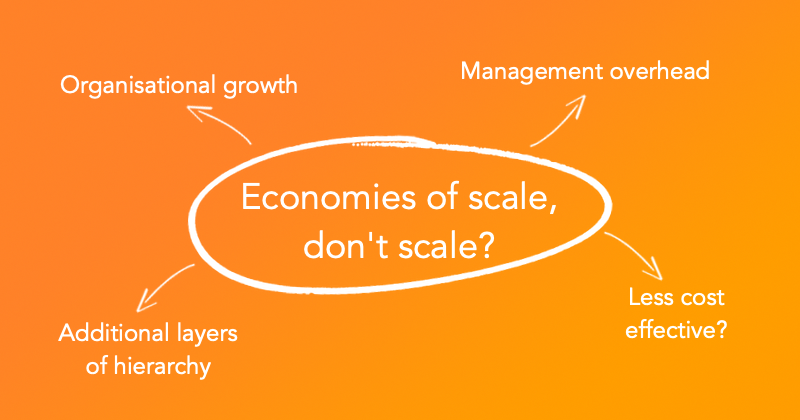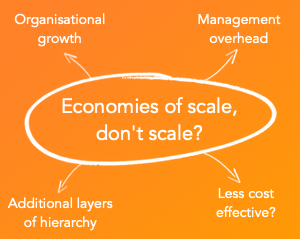A friend recently told me that he thought that often “economies of scale – don’t scale”. Which is an interesting conundrum. He contended that “management overhead” and “additional layers of hierarchy” are introduced into a typical operating model as the organisation grows. Thus, from being a small, nimble and efficient team, as the organisation grows the inevitable increase in “overhead & hierarchy” creates inefficiencies and therefore dilutes the ability for the team to remain nimble and reactive, and the firm becomes typically less cost effective.

This got me thinking about client reporting and how the reporting model should scale. Reporting teams need to be “insensitive to volume”, so whether the team is producing 10 reports, 100, 1,000 or 10,000 the effort expended by the reporting team should remain broadly constant.
This level of scalability and operational efficiency can only be achieved if the reporting system delivers high levels of automation and the reporting team operate and manage workflows based on exception. Through automating the full end-to-end reporting process, and the system identifying and highlighting only “exceptions” to the users all reports, without any issues, will flow through the system for ‘sample’ review and finally bulk approval.
Of course, exceptions have to be managed. Many exceptions are caused by data issues and would typically be the responsibility of the data providers, whether internal or externally sourced. Managing these relationships and the data standards is a key activity of the reporting team, rather than checking for the data quality after it has been provided and used to produce a report. Issues or exceptions that prevent a report from automatically flowing through the process will require effort to investigate and resolve. But the resolution process for these issues can be dramatically reduced when the system has identified the exact cause and provided sufficient detail to the user to facilitate corrective action.
Reporting as a Service will not produce a report that is either incomplete or inaccurate, these situations are automatically identified at the earliest point within the system workflows (based on client configuration parameters), and the report and the data issues clearly highlighted to the user for resolution.
Reporting as a Service allows existing reporting teams to manage and produce volumes of reports many times more than a traditional model, or manual process – with corresponding improvements in content, layout and reporting sophistication.
So, whether or not economies of scale, scale; volume insensitive reporting is effective and allows your reporting team to be more efficient in the production and distribution of your client reports.
To find out more about Reporting as a Service visit: www.opus-nebula.com or contact us at [email protected].

